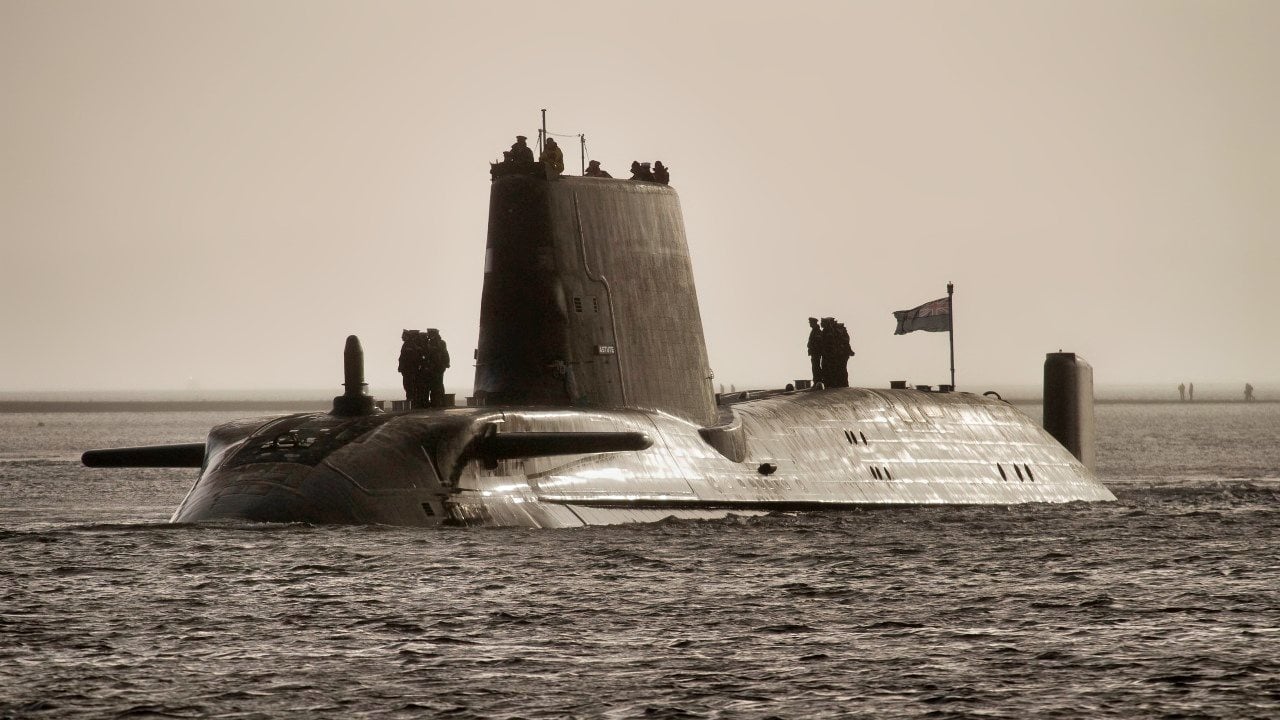'Read the Chart Wrong': How a Royal Navy Nuclear Submarine Could Have Been Sunk
On May 26, 2008, the British nuclear-powered submarine HMS Superb collided with an underwater pinnacle in the Red Sea, 80 miles south of the Suez Canal. No injuries were reported, but the impact damaged the submarine's bow and sonar equipment, rendering it incapable of submerging.
What You Need to Know: On May 26, 2008, the British nuclear-powered submarine HMS Superb collided with an underwater pinnacle in the Red Sea, 80 miles south of the Suez Canal. No injuries were reported, but the impact damaged the submarine's bow and sonar equipment, rendering it incapable of submerging.

-The collision was attributed to a navigational error where a chart depth was misread—a '1' was mistaken for a '7'—leading the crew to believe they had sufficient clearance. Commander Steven Drysdale and two other officers were court-martialed for the incident.
-Already scheduled for retirement after over 30 years of service since 1976, the HMS Superb was decommissioned following the accident.
HMS Superb Collision: Navigational Error Leads to Submarine's Retirement
On May 26th, 2008, the HMS Superb, a nuclear-powered submarine, hit an underwater pinnacle. The collision occurred in the Red Sea, 80 miles south of the Suez Canal. Fortunately, no one was injured. But the incident marked the end of the Superb’s career, while three of her officers would eventually be court martialed.
Oddly enough, the collision would be blamed on a navigational chart misread, specifically, an officer misreading a ‘1’ as a ‘7.’
HMS Superb Takes a Hit: A Submarine Disaster Avoided
“A pinnacle jutting out from the seabed was marked as being at a depth of 123 metres,” according to The Guardian, but the Superb’s commander, Steven Drysdale, “misread it as 723.” Believing that the submarine could easily clear the pinnacle, Drysdale did not take measures to avoid the underwater structure. Instead, “the submarine was directed towards it and it grounded.”
At the time of the accident, the Superb was in a rush. The submarine had been having problems, which had caused the vessel to lose speed; the Royal Navy had placed pressure on Drysdale to arrive with the Superb in the Gulf in time for planned operations. Accordingly, Drysdale “ordered a new route to be plotted that cut about four miles off the previous plan. He also ordered the submarine to dive deeper to where there was colder water, allowing it to travel faster.”
Once the new route to the Gulf was plotted, the officers charged with navigation all failed to notice that the pinnacle marked on the pathway was only 123 metres deep.
According to Captain Stuart Crozier, who was aboard the Superb when she hit the pinnacle, the submarine came to an almost immediate stop. “The submarine collided with the underwater obstacle reducing its speed from 16 knots to three knots in a very short time,” Crozier said. “There was a significant amount of damage to the forehead of the submarine, but no casualties.” Crozier added that a navigational misjudgment was indeed made. “No thorough check was made as to the depths in relation to the decision to take the submarine to this dive depth (250 metres). The new navigational track went directly over the pinnacle which showed 123 metres.”
Damaged but not destroyed submarine
The collision resulted in damage to the Superb’s bow and sonar equipment. The submarine was not able to resubmerge and had to cancel plans to participate in upcoming operations as she was undeployable. However, despite being incapable of deploying, the Superb was able to return to the United Kingdom under its own power.
The incident marked the end of the Superb’s service life. After debuting in 1976, the Superb had served faithfully for over thirty years. At the time of the collision, the submarine was already scheduled to be retired.
Commander Drysdale took responsibility for the incident, expressing through an attorney “deep remorse and regret in relation to the incident,” while fully accepting “his responsibility in relation to this matter.”
Drysdale, along with two other Commanders, would be court-martialed.
About the Author: Harrison Kass, Defense Expert
Harrison Kass is a defense and national security writer with over 1,000 total pieces on issues involving global affairs. An attorney, pilot, guitarist, and minor pro hockey player, Harrison joined the US Air Force as a Pilot Trainee but was medically discharged. Harrison holds a BA from Lake Forest College, a JD from the University of Oregon, and an MA from New York University. Harrison listens to Dokken.
Image Credit: Creative Commons.


